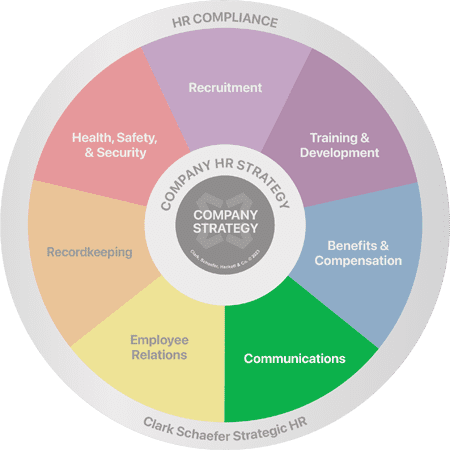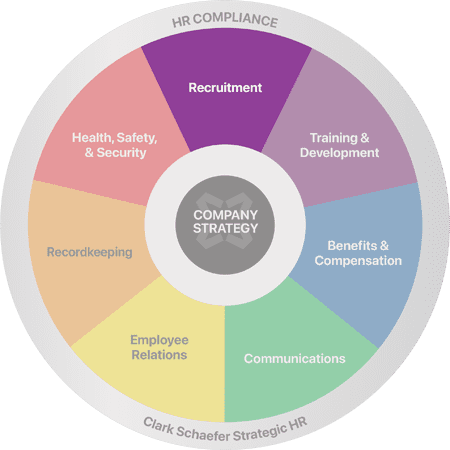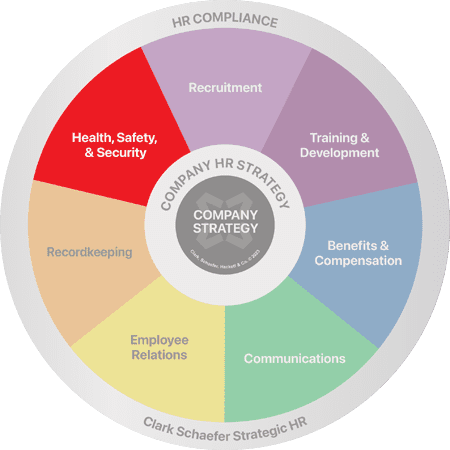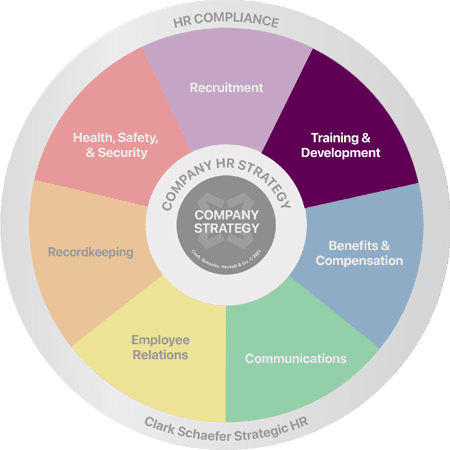Why Do I Need An Employee Handbook?
Last Updated on February 14, 2024 / Communications

HR Question:
Why do I need an Employee Handbook? Are they required?
HR Answer:
While it is not a requirement to have an employee handbook, having one can be an effective tool for you to communicate expectations throughout your organization. The employee handbook can be a quick reference for commonly asked questions such as “When am I eligible for vacation?” or “How do I call in sick?” Beyond communication with employees, a well-crafted employee handbook can provide many benefits to your organization.
Benefits For Employees
Orientation and Onboarding
For new employees, the handbook serves as an important introduction to your company. In addition to explaining work rules and expectations, it introduces new employees to the vision, values, and mission of your organization. An employee handbook can be a roadmap during orientation to help new employees get onboarded more quickly and reduce misunderstandings.
Organizational Culture
Your employee handbook is also an introduction to your company culture. The way that policies are phrased – such as expected working hours and location(s), ways to submit PTO requests or time off, how to communicate family/personal crises should they come up, etc. – can speak to your organization’s flexibility, inclusiveness, open-mindedness, or work-life balance expectations. Drafting policies that promote and reward desired behaviors (and perhaps, even explain the reasons behind them) can help nurture a healthy workplace culture.
Benefits For Employers
Protection for Employers
The employee handbook serves as a legal statement of policy on behalf of the employer. When signed by both the employee and employer, it can stand as evidence that not only were expectations communicated, but they were also agreed to as a requirement of working within the organization. For example, including anti-discrimination and anti-harassment policies, as well as bystander reporting requirements and complaint filing procedures, can provide guidance and protection for both employees and the employer should difficult situations arise.
An employee handbook can also clearly communicate the organization’s right to end employment based on performance, reorganization, financial downturn, or any other reason (commonly known as an “employment-at-will” statement). Without this, an employee may claim that an employment contract was made through other means of communication. Having a clear at-will-employment statement in the handbook may provide some protection from these types of claims.
It is critical for your handbook to be constructed properly for it to provide protection versus risk. Therefore, we highly recommend having your legal counsel review your handbook to ensure that it provides optimal protection for your organization.
HR Compliance
Your employee handbook can be used to meet the requirements of federal, state, and local laws. For example, federal law requires employers who are covered by the Family Medical Leave Act (FMLA) to inform employees of their FMLA rights. If FMLA applies to your organization, an employee handbook provides an opportunity to inform employees of their rights, your internal processes, and answer any frequently asked questions that come up when addressing FMLA needs.
In addition, businesses that have employees across states, cities, and towns may have to comply with the laws in those work locations. Creating state handbook policy addendums for different states or jurisdictions can help the organization in communicating these requirements.
Consistency in Work Rules
An employee handbook formalizes the company’s policies on workplace matters, ideally encouraging a fair and consistent workplace. Managers can refer back to the handbook as a guide when it comes to discipline, internal processes, expectations, or review policies to ensure consistent treatment for each employee.
Including policies such as a progressive disciplinary policy can inform managers and employees of the company’s expectations on how disciplinary issues will be handled, providing a sense of trust and reducing confusion in challenging situations.
Additional Considerations
Evaluating Policies and Communicating Changes
Maintaining company policies in an employee handbook provides an opportunity to examine your policies for contradictory, illegal, or outdated rules. Annual revisions to your handbook will encourage you to identify policy changes that should be made based on company goals, new laws, court rulings, and industry standards.
As with any HR policy revision, it is important to communicate the changes to employees. As a best practice, many organizations require employee signatures verifying that they have received the revised handbook.
Yes – Your Handbook Can Be Used Against You
An employee handbook is significant for what it includes, as well as what it does not include. It should provide policy direction, flexibility when necessary, and a clear outline of practices that your organization can follow consistently.
It is also essential not to include things in the handbook that you are NOT doing. For example, if your handbook indicates that you plan to review employee performance every year, but you haven’t reviewed anyone in over five years, then it would be important to review and revise that statement to reflect the practices you actually follow.
Ensure Your Handbook Is Customized For YOU
Be cautious of handbook templates or copying another organization’s handbook. Avoid including policies that do not apply to your company such as policies for companies with over 50 employees because you think you might be over 50 employees within the next 3 years. Also, make sure you have your attorney review your handbook to ensure they are comfortable defending you, should something ever go to court, based on what is written in the handbook.
Wondering if you’re up to date on policy trends? Learn more about the Top Employee Handbook Policies to Include this Year.
Thank you to Colleen Mahoney, PHR, HR Business Advisor, for contributing to this week’s HR Question of the Week.
Don’t have a handbook and not sure where to begin? Concerned that your current handbook is outdated? Don’t worry. Clark Schaefer Strategic HR can help you to create or revise your handbook to ensure that it serves as a meaningful communication tool helping to protect your employees and your business. To learn more, request a free handbook consultation today.








